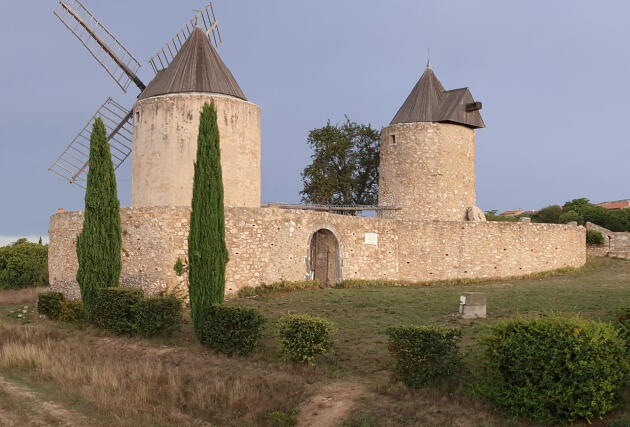
“Turn, turn, little mill”, said the song. They are still a few, recently rehabilitated, to do so. Bucolic visits but not only, from the island of Noirmoutier to the Var, passing by the unmissable mill of Alphonse Daudet.
In Jonzac, bring back your nuts

In 2007, the municipality of Jonzac, in Charente-Maritime, decided to rehabilitate the Bret mill, built in 1706 on a green canal, a refuge for many birds (grey herons, kingfishers, swans, etc.) and leading to the Seugne river. . Set in motion by an oak waterwheel that spins at four revolutions per minute (or about 11 horsepower), it now produces flour and one of the best nut oils in the region. The mill has also been fitted out for visits: a half-hour scenography highlights the role of the river in the history of Jonzac. The miller explains how the mill works; a turbine produces electricity. Not far away, you can visit the remains of a Gallo-Roman villa. The visit is intelligently educational, and you can even bring your walnut kernels to have them pressed.
In Noirmoutier, under the (big) wind

You can see it from the sea, and sailors stopping at the port of Morin necessarily pass in front of it. The Moulin de la Bosse is one of the twenty-three mills still housed today on the island of Noirmoutier (Vendée), accessible by a bridge from Fromentine. The strong winds and the island’s large wheat production justified their presence for a long time. Most are sleek, round white towers with very simple wings. Those of the Moulin de la Bosse can be oriented facing the wind by rotating the roof that carries them with the help of a guivre, a long wooden beam going down to the ground. The last miller ceased his activity in 1945. Since then, having become private properties, the mills of Noirmoutier are only open for tourists.
A Régusse, duo red

Built in the XVe and in the XVIIe centuries, in the Var, 15 kilometers from the lake of Sainte-Croix, these two mills 6 meters high, in the shape of a tower, built in the middle of the fields, have been side by side since then. In 1995 they were completely restored. Their roof, originally chestnut, has been redone in red oak. Each has found its place: one has become a museum of agricultural tools, and the other continues to produce flour. If the force of the wind increases (we are in the land of the mistral), they must face it, and six men are then necessary for the maneuver. Guided tours and demonstrations of the workings of the mills take place on the occasion of Country and Mill Heritage Days (third weekend in June), European Mill Days (third weekend in May) and European Heritage Days (the third weekend in September).
You have 41.18% of this article left to read. The following is for subscribers only.
#Water #wind #mills #visit #circles #weekend


